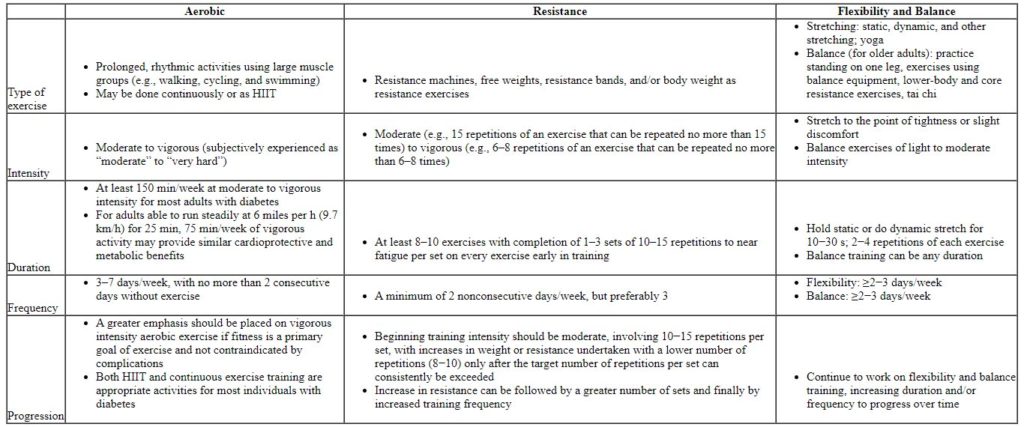The World Health Organisation (WHO) estimated the global prevalence of diabetes among adults over 18 years of age as 8.5% in 2014. The prevalence of diabetes in India was found to be 11.8% according to National Diabetes and Diabetic Retinopathy Survey report released by the health and family welfare ministry in 2019. With an estimated 72.96 million cases of diabetes in adult population of India, we could very well be called the world’s Diabetes capital! The importance of physical activity and exercise cannot be overemphasized in these troubled times, what with reports showing a more severe form of COVID in the obese, sedentary and diabetics. So it is that we are now witnessing a rash of budding cyclists, joggers and Yoga enthusiasts who ironically, have had to contend with gyms that are all but locked up! It is important to realise the importance of exercise and physical activity, especially in diabetes with a view to understanding just how one derives these benefits.
TYPES OF DIABETES
Before moving forward, let us first understand the major types of diabetes and their origins. Broadly speaking, diabetes is classed into 2 major types, Type 1 and 2 (leaving aside Gestational diabetes that occurs during pregnancy and Maturity Onset Diabetes of the Young, a rare genetically inherited diabetes). Type 1 (5%–10% of cases) results from an autoimmune destruction of the pancreatic β-cells, which normally produce insulin, leading to a deficiency of the hormone. Simply put, this condition results from the body’s own cells turning against it, thereby targeting the insulin-producing β-cells of the pancreas. Although it can occur at any age, β-cell destruction rates vary, typically occurring more rapidly in youth than in adults. Type 2 diabetes (90%–95% of cases) results from a progressive loss of insulin secretion, usually also with insulin resistance. An important condition is Prediabetes. This is diagnosed when blood glucose levels are above the normal range but not high enough to be classified as diabetes; affected individuals have a higher risk of developing type 2 diabetes but may prevent/delay its onset with physical activity and other lifestyle changes.
TYPES OF EXERCISE
The next thing to get a hold on is the different types of exercise one can engage in. There are various types of activity that result in various benefits to the body: Aerobic exercise involves repeated and continuous movement of large muscle groups. Activities such as walking, cycling, jogging, and swimming rely primarily on aerobic energy-producing systems 9energy production using oxygen). Resistance (strength) training includes exercises with free weights, weight machines, body weight, or elastic resistance bands. Flexibility exercises improve range of motion around joints. Balance exercises benefit gait and prevent falls, especially beneficial for the elderly. Activities like tai chi and yoga combine flexibility, balance, and resistance activities.
DIRECT BENEFITS OF EXERCISE AEROBIC EXERCISE
Aerobic training increases mitochondrial density, insulin sensitivity and oxidative enzymes. Simply put, these changes at the molecular level boost the metabolism of glucose, thus enabling more efficient sugar control. Aerobic exercise also improves the flexibility of blood vessels, delaying onset of age-related blood vessel stiffness. This leads to overall improved cardiovascular health and lesser incidence of high blood pressure. Exercise improves lung function as it compels one to breathe faster and deeper, thereby opening up the most peripheral parts of our lungs that otherwise remain collapsed during periods of rest, a phenomenon known as “ Recruitment.” This is one of the mechanisms by which exercise-triggered lung health has been found to be protective against extensive lung damage in COVID pneumonia. Aerobic exercise also improves immune function by stimulating function of immune cells. It improves cardiac function by enhancing the return of venous blood from the peripheries due to the pumping action of our muscles, leading to improved cardiac output. These benefits also extend to reduction of blood cholesterol and glycosylated hemoglobin (designated as HbA1c, this blood parameter is indicative of blood sugar control over the last 3 months) levels in both Type 1 and 2 diabetes. A major new fad is HIIT (High Intensity Interval Training), this is a broad term for workouts that involve short periods of intense exercise alternated with recovery periods. This form of exercise has been shown to be associated with enhanced aerobic metabolism in skeletal muscles, increased sensitivity to insulin and thence better sugar control by the body.
RESISTANCE EXERCISE
Diabetes by itself leads to a loss of muscle mass and strength. Benefits of resistance training for all adults include improvements in muscle mass, body composition, strength, physical function, mental health, bone mineral density, insulin sensitivity, blood pressure, lipid profiles, and cardiovascular health. Specific benefits of resistance training in patients with Type 2 diabetes include improvements in glycemic control, insulin resistance, fat mass, blood pressure, strength, and lean body mass.
BALANCE EXERCISES
Diabetes is said to affect virtually every system of the body, notably the blood vessels, kidneys, eyes and nerves, the latter condition known as diabetic neuropathy. This can manifest in various ways, depending upon the nerve involved. The neuropathy can be very painful, especially when it affects the lower limb nerves, leading to balance and gait disorders. Balance and flexibility exercises help in maintaining gait and balance in such patients.
For the readers’ convenience, given below is a summary of the various types of exercise and how to go about them so as to derive maximum benefit.
Exercise training recommendations: types of exercise, intensity, duration, frequency, and progression (From: Physical Activity/Exercise and Diabetes: A Position Statement of the American Diabetes Association, 2016)
Some broad recommendations from the American Diabetes Association (ADA) about the frequency of physical activity in adults with diabetes are:
1. Most adults with diabetes should engage in 150 min or more of moderate-to-vigorous intensity activity weekly, spread over at least 3 days/week, with no more than 2 consecutive days without activity. Shorter durations (minimum 75 min/week) of vigorous intensity or interval training may be sufficient for younger and more physically fit individuals.
2. Structured lifestyle interventions that include at least 150min/week of physical activity and dietary changes resulting in weight loss of 5%–7% are recommended to prevent or delay the onset of type 2 diabetes in populations at high risk and with prediabetes.
To conclude, physical activity and exercise must be made a part of all our lives, more so in our population which is genetically predisposed to diabetes. The amount of sedentary time also needs to be progressively reduced, by interspersing with frequent bouts of intense activity. Such measures, if adopted as part of popular culture, will go a long way in mitigating the socio-economic effects of diabetes in our country.


Dr. A. Kundu
Consultant Cardiac Surgeon,
National Heart Institute
New Delhi



Exercise is important indaily life ?